
In the past, games were self-contained adventures, existing solely within the confines of a cartridge or CD. Whether it was a pixelated rescue mission or navigating barrels tossed by an enraged ape, the gaming experience was limited to the physical medium. Today, however, games have evolved into expansive, interconnected universes, constantly updated and simultaneously experienced by millions globally. This transformation extends beyond the surface, as significant advancements in backend technologies have played a pivotal role in enabling this shift. Amidst the captivating graphics and narratives of contemporary games, it's essential to recognize the hidden but crucial infrastructure that shapes the rhythm, pace, and evolution of our gaming experiences, without which modern games as we know them would not exist.

This network of backend services remains largely hidden from players' eyes but influences the overall experience of games. With an industry estimated to exceed $187B by 2023, understanding the nuances and future of backend services is a competitive necessity for developers and decision-makers.
Many games that stumble at launch often do so due to bottlenecks in login and matchmaking processes, both of which are key responsibilities managed by the backend system. Consider the case of Payday 3: its launch was marred by backend challenges, manifesting as severe server errors and matchmaking issues. These technical shortcomings have significantly tarnished the game's player reception, business performance, and will have a knock-on effect on the future of the franchise. It just underscores the essential role of backend systems.
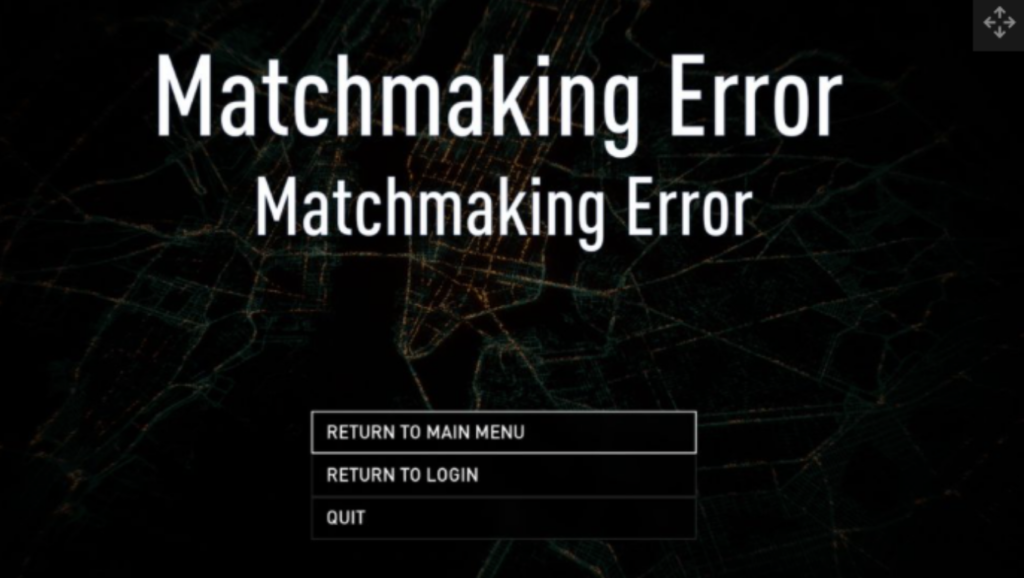
The backend encompasses all the systems running behind the scenes, from data storage, player management, in-game economics, to the distribution of new content. But to label it merely as the game's ‘operational unit’ would be a disservice. It's the silent engine, ensuring that millions of global players experience a game as intended– seamlessly, securely, and in sync. Said differently, it's the bridge that connects disparate players into cohesive worlds, and the wizard that magically introduces new challenges, landscapes, and narratives into games without the need for hefty downloads or disruptions.
However, crafting this is no minor feat as game backend development is fraught with challenges:
- Scalability: Modern games, especially multiplayer ones, need to handle vast and unpredictable player bases. A game's backend must smoothly scale up during peak times– such as game launches or special events– and scale down during quieter periods, all while maintaining optimal performance.
- Security: With real-world economics deeply intertwined with virtual worlds (think in-game purchases and trading), ensuring data security becomes paramount. Breaches can result in not just financial losses but also erode player trust.
- Synchronization: As cross-platform play becomes more prevalent, backend systems need to ensure that a player's experience is consistent whether they're logging in from a console, PC, or mobile device.
- Rapid Iterations: The gaming landscape is dynamic, with player feedback, bug reports, and new content continuously pouring in. Backend systems must support quick iterations without causing significant game downtime.
In light of these challenges, one might wonder, "Why invest so heavily in something players rarely see directly?" The answer lies in understanding that the backend's health directly influences player satisfaction, retention, engagement, and monetization.
- Seamless Experiences: Players expect games to run smoothly, with minimal loading times, no lag, and real-time updates. A robust backend infrastructure is essential to meet these expectations. Any issues with the backend can lead to player dissatisfaction and possible churn.
- Longevity and Adaptability: Games that wish to remain relevant beyond their initial launch phase need to evolve – introduce new content, tweak mechanics, and adapt to player feedback. A flexible and strong backend allows for this evolution, ensuring that games remain fresh and engaging.
- Financial Viability: In the Games-as-a-Service era, consistent player engagement is key to maintaining revenue. However, downtimes, bugs, or data breaches can lead to substantial financial setbacks. By investing early in a robust backend, developers can safeguard against these issues, ensuring both consistent revenue and trust from players.
- Enhancing Meta Game: A robust backend is key for developing engaging metagames, and crucial for player retention. It allows developers to seamlessly add depth and complexity to the primary game, keeping players engaged over time. This not only enriches the experience but also ensures the game's long-term appeal and player involvement.
As we explore the gaming industry's backend landscape, one truth becomes evident: the future of gaming is as much about unseen technologies as it is about visible experiences.
Backend-as-a-Service (BaaS) solutions, such as those offered by Playfab, Unity, Beamable, and most notably Pragma, one of the first venture backed BaaS solutions in this latest generation and one of Naavik’s Open Gaming Research Initiative partners, are emerging as essential tools for cross-platform developers. These ready-made backend solutions can handle much of the heavy lifting, allowing developers to focus on gameplay mechanics and user experience rather than getting bogged down by infrastructure challenges.
In this article, we will explore three forward-facing trends that are reshaping the gaming experience. Each is a testament to the backend's capability to support and elevate the gaming industry. They are not isolated advancements, but interwoven with the backend's strength and flexibility. First, the seamless cross-platform play that dissolves barriers between devices, creating a unified gaming community. Next, the shift from client-based to server-centric architectures enables games to rapidly iterate based on player feedback and continuously deliver evolving content. Finally, the emergence of iterative meta, where games evolve in real-time, responding dynamically to player behavior and feedback.
#1: Cross-Platform Play – The Backend Magic Behind Seamless Integration
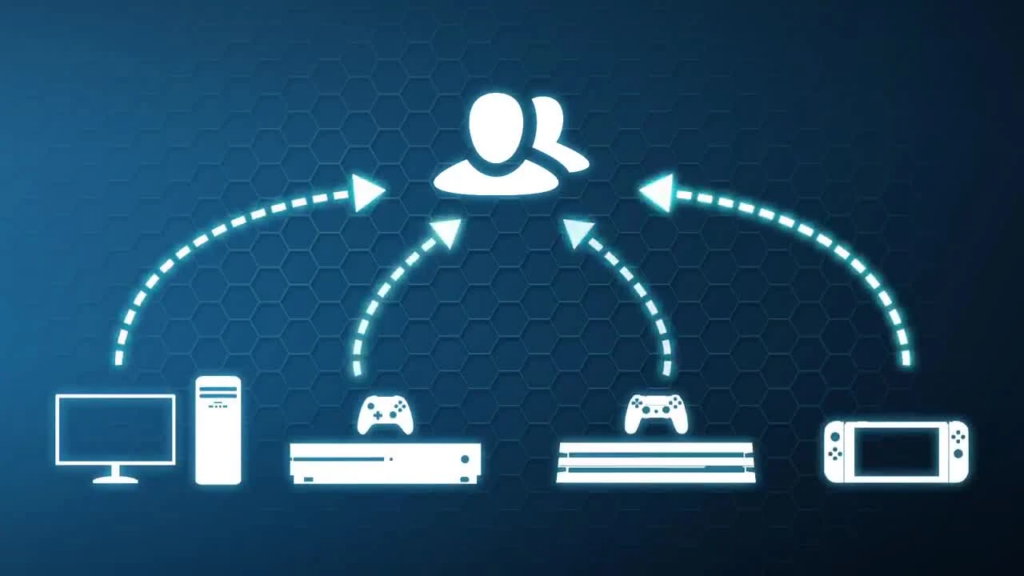
Cross-platform play is arguably one of the most game-changing evolutions of the decade. By enabling players on different platforms – be it a PC, console, or mobile – to interact and compete, it's redefining boundaries and enriching the gaming experience.This integration is crucial, especially for multiplayer or live games, where a substantial player base is necessary to avoid long match queues. The increasing prevalence of games designed with cross-platform capabilities underscores this trend. As noted in a previous Naavik piece, facilitating gameplay across different platforms not only fosters diversification and broadens the audience, but also enhances player LTV.
By creating a unified pool of players across various platforms, cross-platform play ensures a more viable audience size, making it essential for the success of multiplayer games. Most crucially, it enriches the gaming experience for the players themselves, allowing them to connect and play with friends regardless of their chosen platform.
In the earlier days of gaming, each platform was its own siloed universe. Xbox players played with other Xbox players, PlayStation enthusiasts stuck to their own, and PC gamers rarely met console gamers on the virtual battleground. But titles like Minecraft, Fortnite, and Rocket League began bridging these gaps. And many more recent games, such as Genshin Impact, Marvel Snap, and Honkai: Star Rail, follow in the same footsteps.

However, this unified cross-play gaming experience doesn't come easy. Many publishers have attempted to build these systems internally and it has led to a myriad of unexpected costs that have only grown over time. BaaS offerings are decreasing the barriers to entry in this space by decreasing costs by over 80%. It's underpinned by a sophisticated backend system that handles a myriad of tasks:
- Player Data Synchronization: One of the core challenges in cross-platform play is ensuring player data, including game progression, in-game purchases, and stats, remains consistent across platforms. The backend manages a centralized data repository that all platforms tap into, ensuring a PC player picking up their game on mobile is greeted with the exact progress and inventory.
- Matchmaking: This involves pairing players of similar skill levels, but with cross-platform play, the backend has to account for potential disparities between platforms, like controls and hardware advantages. Advanced algorithms and player data analytics are employed to ensure fair and competitive matchmaking.
- Real-time Communication: Be it game state updates, chat functionality, or real-time in-game events, the backend ensures seamless, low-latency communication between platforms, providing a cohesive gaming experience.
- Monetization and Transaction Management: With different platform stores and currency systems, backend systems unify these ecosystems. When a player purchases an in-game item on their PlayStation, they expect it to be available when they log in on their PC. This seamless transaction and inventory management across platforms are facilitated by the backend.
- Security and Anti-cheat Mechanisms: Different platforms have unique vulnerabilities. The backend infrastructure plays a crucial role in ensuring a standardized layer of security across all platforms, detecting and mitigating cheats that could disrupt gameplay.
For instance, Coffee Stain Studio's Valheim, despite being in early access, continues to grapple with crossplay challenges that have persisted since October 2022. This crossplay complication stands as the most upvoted concern awaiting resolution on the game’s public bug tracker. It should be noted that the game is still in Early Access, and so players might be more forgiving of such issues in terms of ratings, CCU or even revenue impact. But that’s likely not going to be the case at global launch.
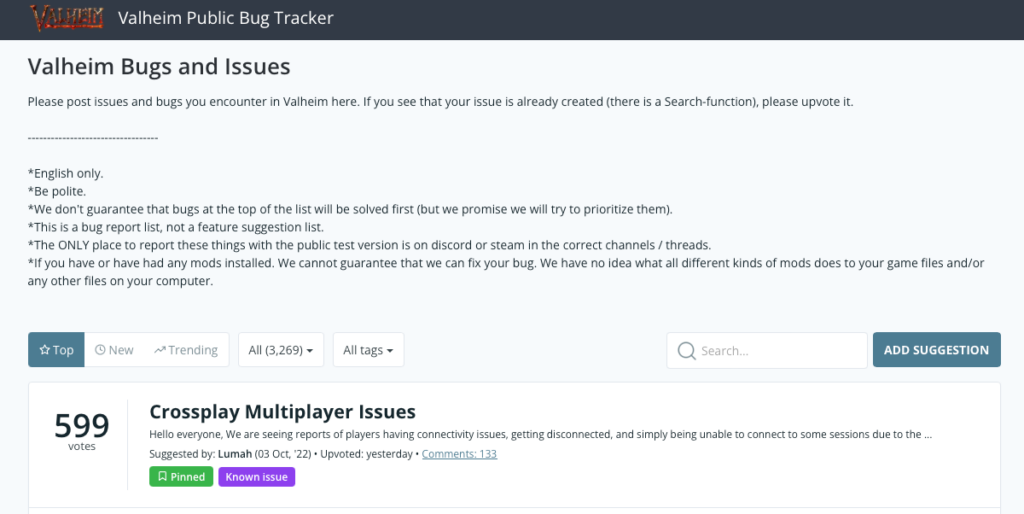
The adoption of cross-platform play is becoming a pivotal strategy for game developers, aimed at enhancing accessibility and acting as a potent UA conduit. A prime example is Fortnite, which used its mobile presence as a UA channel to guide mobile gamers towards more immersive PC and console experiences. This approach not only deepens user monetization over time but also ensures the omnipresence of the Fortnite experience, accessible on mobile for on-the-go play or through a more immersive setup on PC or console.
Additionally, cross-platform presents a viable alternative to the conventional 30% store tax by being able to sell virtual goods direct-to-consumer, enabling developers to preserve a greater portion of their revenue. Public statements from companies are increasingly shedding light on the significant role that DTC channels play in their revenue streams, with industry leaders like Playtika and Supercell exemplifying this trend. The shift towards cross-platform play transcends the expansion of the player base; it represents a shrewd financial strategy that augments revenue channels and bolsters user engagement throughout the gaming landscape.
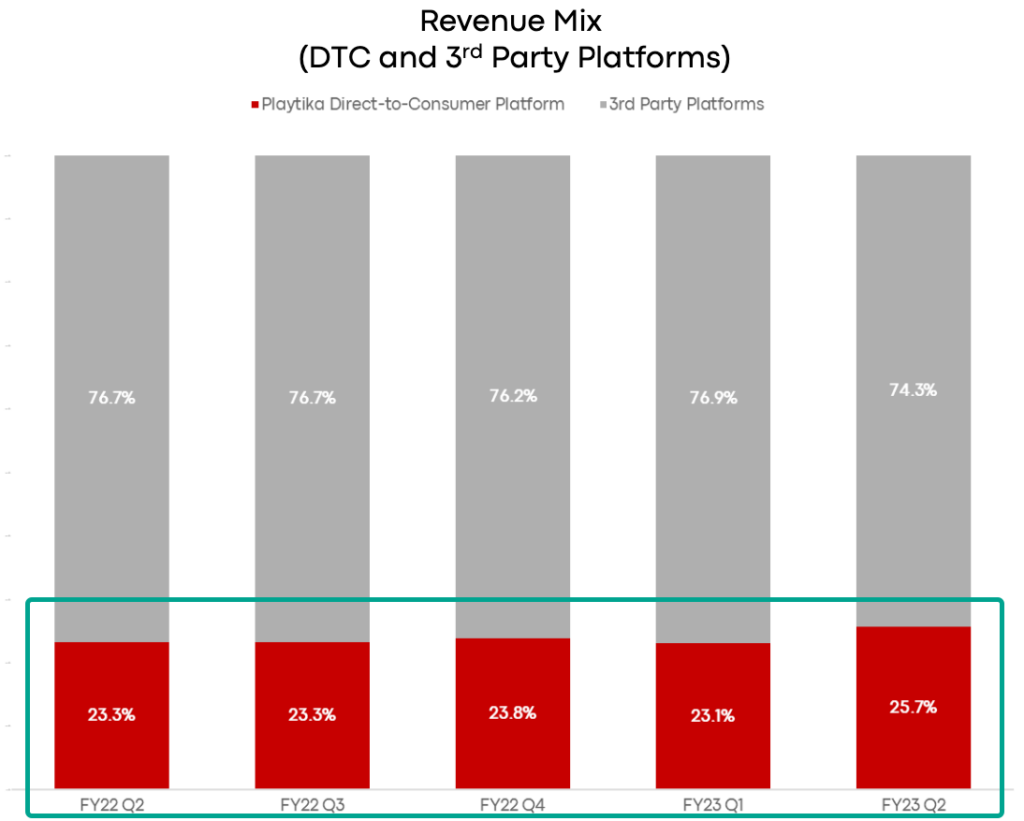
Yet challenges remain. Different hardware capabilities, proprietary platform policies, and varied monetization models often clash. Historically, companies like Sony were hesitant to open their platforms for cross-play. However, the immense potential for increased player engagement, revenue opportunities, and community-building has led to a change of heart for many.
#2: The Continued Shift to Server-Based Logic and Platform Services

The video game industry has long grappled with the balance between client and server processing. Historically, most game mechanics were executed on the client-side, primarily due to the offline nature of games and the limited capabilities of early server infrastructure. However, as internet speeds surged and cloud computing ascended, a paradigm shift occurred: game developers started transitioning more processes from the client to the server. This transformation, while technologically intricate, is poised to redefine the gaming landscape in numerous ways.
Advantages of Server-Side Logic and Processing:
- Enhanced Security: One of the perennial challenges of client-side processing is the vulnerability to hacks and cheats. By moving critical game logic to the server, developers make it considerably tougher for malicious actors to manipulate the game, ensuring fair play. For competitive games, this integrity is paramount.
- Unified Gaming Experience: Relying on server-side logic ensures that every player, irrespective of their device or location, experiences the game the same way. This uniformity is crucial in maintaining game balance and a consistent player experience.
- Efficiency and Flexibility: By centralizing updates and changes on the server, developers can push global changes without requiring players to download hefty patches. This not only reduces the bandwidth costs but also results in quicker and more frequent updates.
The beauty of server-side processing shines brightest when it comes to updates. Previously, updates meant downloading large files, often leading to long wait times and potential storage issues for players.
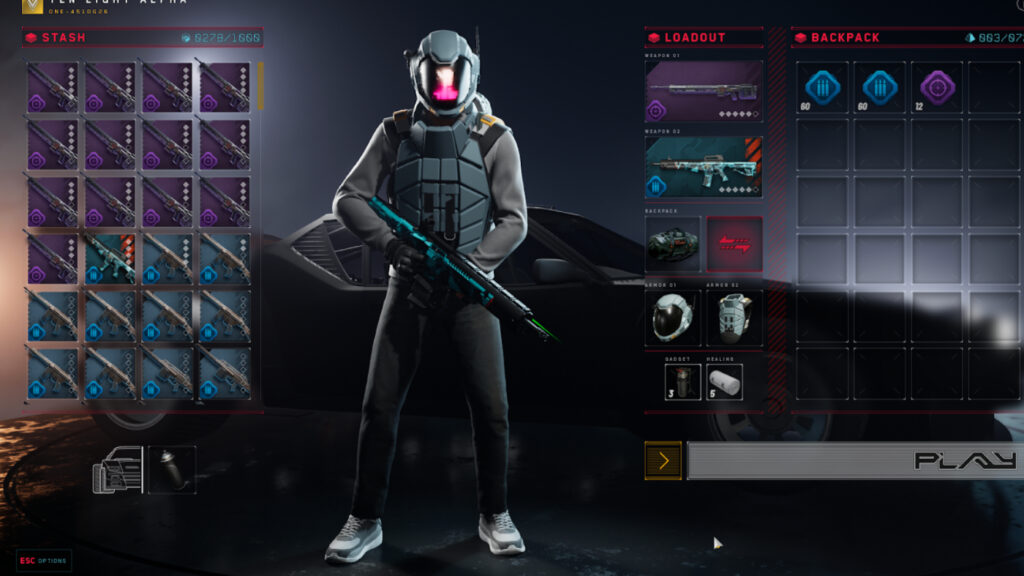
However, with the shift towards server-side processing, developers can now implement over-the-air updates in real-time. This fluidity offers:
- Dynamic Game Worlds: Developers can react to player behaviors, global events, or narrative needs, altering the game environment on the fly.
- Efficiency: Instead of large, infrequent patches, games can be updated incrementally, ensuring that players always have access to the latest content and fixes.
- Player Retention: The ability to introduce new content or challenges without any friction significantly enhances player engagement. They're more likely to stay immersed in a game that's constantly fresh and evolving.

In a counter-example, 'Return to Moria', a survival crafting game launched in 2023, employs a client-hosted model that has been associated with various performance issues. Critics point out challenges including bugs that result in item loss, unstable frame rates, extended loading times, delayed map loading and visible developer objects. While it is surprising to hear that titles of such stature still predominantly live client-side, the situation also highlights the potential drawbacks of depending predominantly on client-side hosting. Arguably, Return to Moria could have addressed a large portion of these issues if the processing were server-hosted.
Generally, game servers are some of the most expensive servers to run, because the technology is designed for high-performance at low scale (each game server in Unreal usually hosts one match of a game, so ~10 players). On the other hand, platform services are designed for high scale but response times are not as critical. For example, a platform service powering a Cosmetics Store feature or a Party screen doesn't need to have super low latency, but it does need to be reliable when 100,000 players are all online at the same time trying to buy the newest stuff.
While the shift from client to server holds promise, it isn't without challenges. Developers must grapple with ensuring server uptime, managing latency, and balancing the costs associated with cloud computing resources. Plus, for regions with unstable internet connections, relying too heavily on server-side processing can hinder gameplay.
Additionally, the evolving trend in backend development is not only shifting logic from client to server, but also involves a more balanced distribution of game logic between game servers and platform services, or Backend-as-a-Service (BaaS). This approach brings several advantages. For one, it streamlines updates, as modifying platform service features often bypasses the complexities of building new patches and redeploying game servers. Also, this shift allows for a more cost-effective use of resources, balancing the high-performance demands of game servers, traditionally used at a lower scale, with the broader scalability of platform services.
#3: Constantly Evolving Metagames for Enhanced Player Retention

Source: Marvel Snap Zone
As the gaming industry evolves, so do its strategies to keep players engaged. One such transformative approach is the focus of metagames. From achievement systems to mini-games, metagames are becoming essential tools in a developer's arsenal for boosting player retention. But how does the backend system play a pivotal role?
At the heart of the successful meta lies a robust and agile backend system. This is crucial, given the dynamic nature of metagames – they often require frequent updates, balance changes, and tweaks based on player feedback.
- Dynamic Content Updates: An agile backend allows developers to introduce or modify meta game elements in real-time. Whether it's introducing a new set of cards or tweaking the rules of a mini-game, these changes can be made seamlessly, keeping the player experience uninterrupted.
- Data Analytics for Player Behavior: Backend systems continuously collect data on how players engage with meta games. This provides developers with invaluable insights – hich meta games are most popular? Where are players struggling? Using these insights, developers can refine and optimize the metagame experience, ensuring players remain engaged and satisfied.
- Integrated Reward Systems: Backend systems manage player inventories, achievements, and rewards. As players engage with metagames, rewards can be seamlessly integrated into their main game progression, bridging the experience between the primary game and its meta elements.
- Personalised Game Experiences: As we delve deeper into a privacy-first world of performance marketing, personalisation in the game experience is becoming more important for game teams to think about. And backend systems enable it. Without platform services that track live player data and hook back into the game’s store, it would be virtually impossible to do something like League of Legends' "Your Shop", which uses ML-based algorithms to give players unique discount offers based on what heroes they’ve played and cosmetics they’ve bought in the past.
For example, Marvel Snap uses a weekly cadence of Over-the-air updates for game balancing in order to keep the game fresh and competitive, encouraging players to continuously develop new strategies. This responsive approach to gameplay dynamics reflects a deep understanding of player engagement and the necessity for ongoing refinement.

Constantly evolving metagames represent a powerful strategy in today's competitive gaming landscape. They offer a layered, diverse experience, ensuring that players always have something new and exciting to explore. And while players see a cohesive, integrated experience on the surface, it's the backend systems working tirelessly behind the scenes that truly elevate these meta experiences, driving player retention and ensuring long-term game success.
Navigating the Future of Gaming's Invisible Backbone
As technology continues to advance, the capabilities and possibilities of backend services will expand in tandem. While the above trends will continue to push the envelope, there are a few other corners of the market that are doing their part too:
- AI-driven Backend Systems: AI could be employed more comprehensively in backend systems for predictive scaling (anticipating player influxes based on trends), curbing poor player behavior in social game settings, and dynamically adjusting game environments based on real-time player feedback.
- Enhanced Real-time Interactions: As server capacities and processing powers grow, real-time interactions in games will become more intricate. Imagine MMOs where every action has an immediate and lasting impact on the game world, all processed and managed by the backend.
- Personalized Player Experiences: Backend services could utilize advanced algorithms and player data analytics to tailor game experiences to individual preferences. This means not just recommended content and purchases, but also dynamic game environments that adjust to a player's style and preferences.
Going back to the start of this piece – one of the most transformative evolutions in the gaming backend landscape has been the emergence of Backend-as-a-Service (BaaS). As game development became more complex, developers found themselves spending disproportionate amounts of time wrestling with server issues, databases, and networking rather than focusing on actual game design and storytelling.
BaaS emerged as a solution to this dilemma. These are ready-to-use backend solutions, customized for gaming needs, allowing developers to plug-and-play essential backend services without building everything from scratch. They're scalable, often leveraging cloud technologies, ensuring that games can handle vast and unpredictable player bases. Furthermore, they come with built-in analytics, helping developers understand player behaviors and preferences, leading to more informed game design decisions.
Historically, the BaaS landscape has been a competitive field, with numerous companies striving to offer comprehensive backend solutions. This spectrum of providers has included prominent names like Demonware (now part of Activision), Hydra (now part of WB Games), PlayFab (now part of Microsoft), and GameSparks (now part of Amazon), each bringing their own approach to streamline backend services. While these platforms have made significant contributions, they often faced challenges in fully meeting the diverse and specific requirements of different gaming studios, sometimes resulting in limitations due to their fixed feature sets.
Amidst this varied landscape, Pragma, having raised over $40M, has emerged as one of the leaders in the recent wave of BaaS providers, powering projects including Frost Giant, Mountaintop, Lord of the Rings Moria, and People Can Fly.
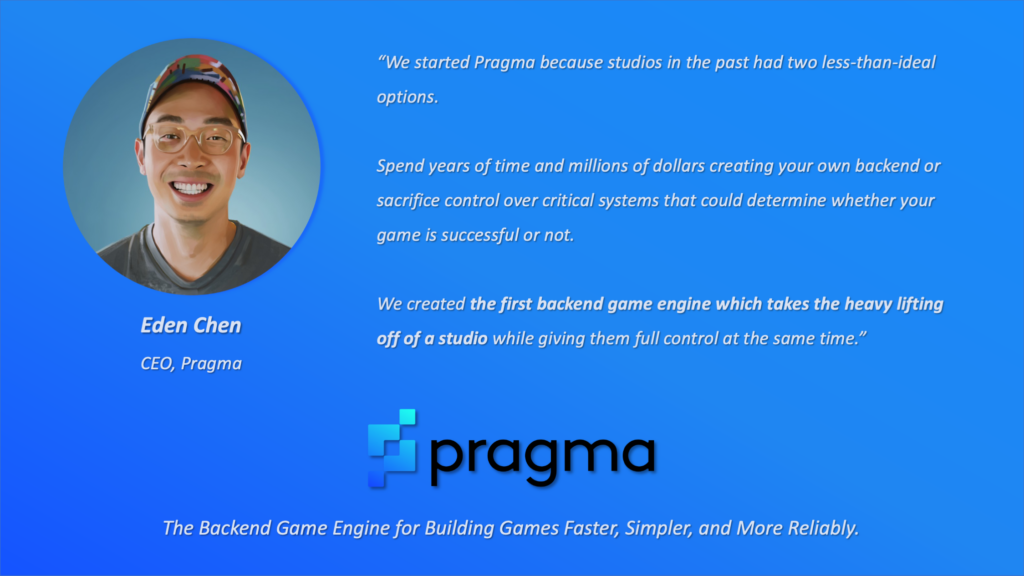
Furthermore, with the rise of cross-platform gaming and the need for seamless experiences across devices, BaaS systems offer unified solutions, ensuring that whether a player logs in from a console, PC, or mobile, their experience remains consistent and engaging.
The rise of BaaS also brings forth new challenges – data security concerns, increased reliance on third-party providers, and the potential for homogenized solutions that might limit unique game mechanics or experiences. Navigating these challenges will be crucial for studios looking to harness the power of BaaS fully, but the concept itself is nonetheless a level up compared to what our industry had access to before.
More broadly and based on all the above, it’s clear that whether you're a developer looking to leverage the latest in backend technologies or a decision-maker charting the course for your studio's future, understanding the evolving landscape of backend services is crucial. The future of gaming, in many ways, hinges on the invisible, yet indispensable, backbone that these services provide. Therefore, it is all the more important that you also pick the right backend service for you.
A Big Thanks to Our Partners
This essay and all of Naavik’s freely available research wouldn’t be possible without the support of our Open Gaming Research Initiative partners. Learn more about them here.

Naavik has helped 250+ games teams with game & economy design, market research, user acquisition, and more. If interested in how Naavik can help your team, make sure to learn more and get in touch.








